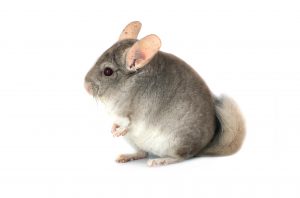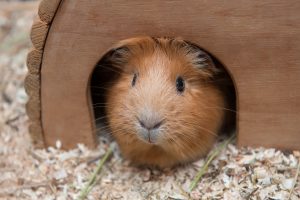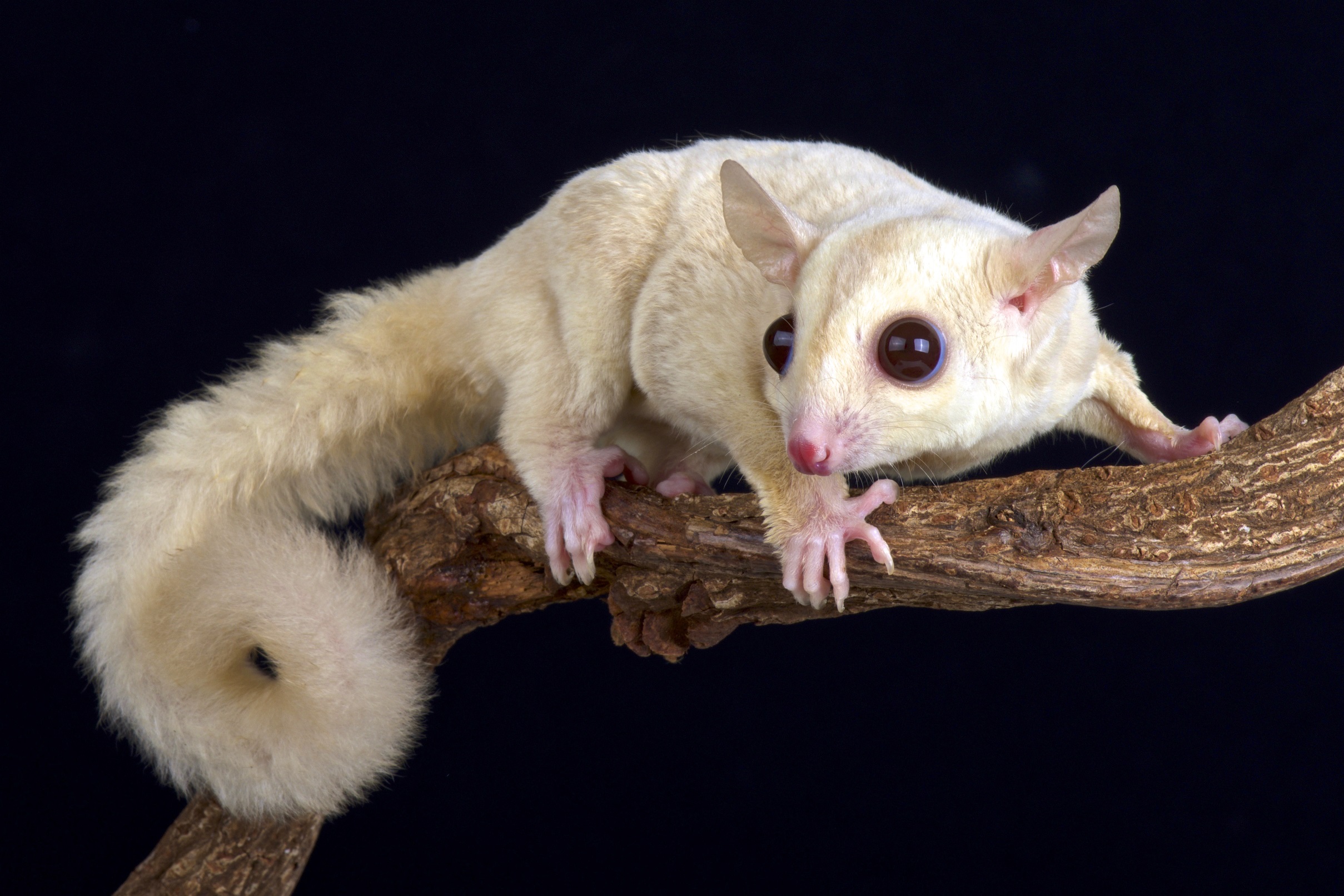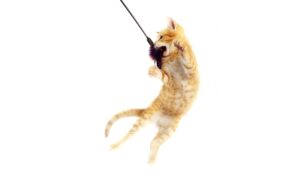Small Pets, Big Sales
Colleen Murphy //January 11, 2017//
When Sun Pet Ltd. General Manager Barry Wisebram was a child, he’d go into pet stores and watch the hamsters, guinea pigs and other small animals scamper around in their habitats. Having the small animals to watch was what made him want to enter and stay in the store, and eventually, Wisebram wound up buying one.
Now, Wisebram is helping continue that cycle of drawing customers into pet stores and having them build a fascination for small animals through Sun Pet’s job of supplying wholesale animals—including small animals—to pet retailers around the country.
“Live animals in general are what draw people into a pet store… the live is what gets people in the store and makes them want to stick around,” Wisebram said. “I think that’s an important part of the industry. I think it would do stores well to remember that.”
Pet World, located in Natick, Massachusetts, recognizes this draw that live animals have, according to the store’s manager Dan Lavallee. Packages of dog food just don’t provide as much entertainment for younger children and other customers as a small animal does, Lavallee joked.
According to the 2015-2016 American Pet Products Association National Pet Owners Survey, 5.4 million U.S. households own a small animal. And in total, there are 12.4 million small animals owned in the U.S.
With the current popularity of small animals in the U.S. and the reminder from Wisebram and Lavallee about how live animals can positively affect foot traffic, pet retailers might consider adding a small animal section or expanding the one they currently have.
Before doing so, there are several important points that all retailers should keep in mind when dealing with small animals.
Teach Your Customers
Not all small animals are the same—some require more care than others. Prospective pet owners often wonder if there’s a certain level of “expertise” needed before purchasing, say, a sugar glider or rabbit. But instead of making sure customers have a certain degree of ownership “expertise” before taking an animal home, many suppliers and retailers agree that ensuring customers fully understood the amount of care each animal requires was more important. To them, the amount of dedication one is willing to give to the animal is more important than someone’s past experience.
“I think people should be educated on what they’re getting into,” Wisebram said. “A guinea pig can live eight or 10 years. So you get it for your kid, what are you going to do if the kid doesn’t want it for 10 years? You need to look at the life of the pet and make sure you are willing and capable to take care of that pet for the lifecycle so it doesn’t end up in some rescue somewhere.”
Marc Morrone, co-owner of Parrots of the World Ltd. pet store in Rockville Centre, New York, explained that, by offering a large selection of small pets, it is up to him and his staff to ensure consumers know the level of care required for all of the animals they desire.
“You just have to make sure they realize that the cage needs to be cleaned,” Morrone said. “If someone comes in to buy a rabbit or guinea pig, you need to tell them, ‘This cage needs to be cleaned every single day for the next six years until (the animal) dies from old age.”
Pet World, which expanded its original small animal section from basic small animals, like guinea pigs and hamsters, to the more exotic, like sugar gliders and degus, also makes it a point for its customers to know just how much care each animal needs.
“We kind of tend to give the person more of the negative of the animal than just the positives,” Lavallee said when explaining how Pet World makes sure its customers fully understand the level of care each type of animal needs. “Yes, a hedgehog is cute, but they can be very dirty—where you need to clean their wheels every day and things like that… Too many people get caught up on, ‘Oh, they have such a cute little face,’ and they kind of forget about all the other stuff that goes into it, like having to keep the cages warm and things like that.”
In doing so, pet retailers can prevent owners from bringing back unwanted pets later on down the road.
Many consider small animals a good “beginner pet” for children. Like Wisebram did, some children learn how to be more responsible and about the importance of caring for another living thing through owning a small animal. But even those “beginner” animals—the ones that require less care—have a level of responsibility new owners should know about.
Animals in the Store
Morrone’s Parrots of the World brought ferrets into the store in 1980, according to the  company’s website. Since then, the store has expanded its small animal selection to include other small animals, including guinea pigs, hedgehogs and hamsters.
company’s website. Since then, the store has expanded its small animal selection to include other small animals, including guinea pigs, hedgehogs and hamsters.
According to Morrone, he started supplying ferrets because they were “fun,” but the selection expanded when he realized that he had to do something that the big box stores couldn’t do in order to compete with them—and that was sell more exotic small animals.
While Morrone has his own network of people from where he gets his small animals, other stores opt to purchase their animals from a wholesaler, such as Sun Pet Ltd.
Wisebram said that Sun Pet has more recently expanded its wholesale business to include shipping small animals to small pet stores. In the past, he said many pet stores thought wholesale was too expensive and that retail owners felt they could breed the animals themselves.
However, he said that, over time, retailers began to realize that breeding the animals within the store does cost money—in terms of both employee labor and space.
“What we offer is just a mind-boggling variety that’s available all the time,” Wisebram said. “So stores don’t have to waste space or time, they can literally buy what they need for that week and keep their money and their space and their resources freed in places where they may have to focus on.”
According to Wisebram, a wholesaler is also convenient when a customer wants to purchase a specifically colored small animal.
Following the trends of what small animal consumers want can be helpful when deciding which animals to stock. Sun Pet Ltd. offers 12 kinds of hamsters, and as a whole, those and guinea pigs are its most popularly requested small animals.
Once a store selects the types of small animals it wants to carry, it has to make sure to maintain the upkeep of the animals’ habitats.
“The small animals don’t ask for a lot, but you have to make sure everything looks brand new all day long,” Morrone said.
Keeping a small animal section looking great is especially important in today’s digital age.
According to Morrone, younger customers often have their cell phone with them when they visit a pet store, and if they see that a cage doesn’t have a toy or that there seems to be no food pellets (even though the animals might have just buried them for later), they can take a picture and instantly put a negative review online.
The Critter Zone Air Naturalizer might be able to aid in keeping your store fresh and clean.
“CritterZone provides indoor air with the natural charge it needs to virtually eliminate odors, allergens, dust and bacteria,” according to the company’s website.
Marshall Pet Products’s GoodBye Odor line can also help in having your store smell clean. In turn, a more inviting environment can be made for your customers. The product, which is applied once a day to the animals’ food or water, “safely and naturally stops litter box and bedding odors,” according to the company’s website. The GoodBye Odor line “internally deodorizes pet’s waste, urine and body odors.”
Pet World ensures the animals themselves are as presentable as possible by making sure they are healthy as possible.
“When we get animals in, we hold them for at least a week before we put them up for sale,” Lavallee said. “That way, we can make sure they’re eating, drinking and they don’t have any illnesses.”
It is also important to realize from where you will be making money with a small animal section.
“Bringing the small animals into the store is easy enough, keeping them is easy enough,” Morrone said. “The only issue is, are you going to make money off of them? No, you’re not going to make money off of them, and don’t expect to make money off of them.”
Instead, the money made from a small animal section comes from the many small animal products that a small animal owner has to constantly buy.
Stocking Supplies
Food, supplements, water bottles, bedding, cages, chews, treats, toys, grooming supplies, harnesses, leashes—the list of items that small animals need is a long one, and it is there that a store will make its money off of its small animal section.
Morrone keeps a selection of small animal products in his store from all different companies, including Super Pet, Oxbow, Kaytee, Marshall Pet Products and Prevue Pet Products. Anything he can supply, he does.
Stocking your store with an assortment of must-buy small animal items and accessories, like those from Super Pet’s (by Central Garden & Pet) newer line of natural products—from chews and toys to nesting and hideaway enclosures to go in the cage—or Ware Manufacturing Inc.’s collections of small animal homes, starter kits and cage cleaning supplies, boosts the chance of a customer finding what they want in your store.
Kaytee also offers a plethora of small animal products and accessories. Its Carrot Patch Chew Toy comes in a three-pack, each with a different texture, allowing small animals to satisfy their chewing instincts. The animals can also feel safe and comfortable in the Kaytee Tunnel Hideaway, which is available in four colors, or with the Kaytee Woven Mats, which come in two sizes and four different colors.
Buying an enclo sure is essential with the purchase of a small animal and, thus, is essential to stock if you choose to have a small animal section. BioBubble puts a modern spin on a small animals’ habitat with its sleek modular design. Owners have a clear 360 degree view of the animals’ space, and the company says its terrariums can be made into “a centerpiece in any room of the home or office.”
sure is essential with the purchase of a small animal and, thus, is essential to stock if you choose to have a small animal section. BioBubble puts a modern spin on a small animals’ habitat with its sleek modular design. Owners have a clear 360 degree view of the animals’ space, and the company says its terrariums can be made into “a centerpiece in any room of the home or office.”
When pet owners want to spend time with their small animals outside of their habitat, MidWest Homes for Pets might have a solution.
“MidWest offers a variety of containment products for many different small animals, including, ferrets, rats, chinchillas, sugar gliders, hedgehogs, degus, guinea pigs, hamsters, gerbils and more,” according to its website.
Its Critterville line of small animal pens allows for owners to put their animals into a larger enclosed area so that the animals can exercise and play more freely. And this year, MidWest will be coming out with new gates that can also be added to your store’s shelves.
For those who want to take their small animal on the go, LIXIT Corporation, the world’s largest manufacturer of small animal watering devices, offers a 19-inch small pet carrier that comes in a variety of trendy patterns and colors, including skull and cross bones and camo green.
Taking the importance of small animal products into consideration, Wisebram says the most lucrative small animal for a pet store might be a ferret.
According to Wisebram, ferret food is typically a little more expensive than those for other small animals. Ferrets also use a litter box, so retailers should be selling litter and a box, such as Moderna’s litter box that fits snugly into a cage’s corner, when someone purchases a ferret. Shampoos and sprays that help lessen their musky smell can also be sold.
Then there are the ferret clothes.
“They wear sweaters, and people spend money on them kind of like they do dogs and cats where they get outfits,” Wisebram said.
For example, Ware Manufacturing, Inc. offers ferret bandanas and jogging vests.
Linda Cope of Marshall Pet Products, which specializes in ferret products, said that—if helped in the right way—customers can potentially spend a lot on ferret products in your store.
“Ferrets are family pets, and most ferret owners are multiple ferret owners as well as multiple pet owners… Many of our best independent store owners are highly trained in the care of the animal and pass that information onto the ferret owners,” Cope said in an email. “This usually leads to a long-time customer, and those customers can spend upwards of $1,000 a year for one ferret. The trick is making sure you are honest and helpful with the kids and you have the right products in stock.”
If your store decides to carry chinchillas, you can choose to carry the Chinchilla Dry Bath from LIXIT. However, it can also be used for “other small animals that enjoy grooming in dust,” including gerbils and degus, according to the company’s site.
One problem that Morrone has run into is that while people are buying the animals from him, they are purchasing the supplies at a cheaper price at a big box store.
Sonia Wertz of LIXIT encourages retailers to make it even more convenient than it already is for consumers to buy products at your store.
“Have a check-off list of products that a customer needs to provide for the pet,” Wertz said. “Perhaps offer a ‘club card’ that offers discounts on return customers for items that need to be repurchased, such as food, litter, bedding, treats, etc. You need a complete section if you are going to sell small animals and their supplies. Many stores make a ‘kit’ for small animals—a cage, water bottle, litter, etc.—everything a customer needs to walk out of the store with a small animal.”
According to Lavallee, Pet World makes sure its shelves are always kept straight, organized and full. Besides the neat appearance, Lavallee says that letting your store’s small animals do your products’ selling can be beneficial. Pet World will put toys they stock in the animals’ cages so that customers can watch the toys in action and see how much the animals enjoy them.
“Anybody who does small animals has to be willing to try different things… and try to get behind the items by promoting them by using them in their cages,” Lavallee said.
Making the Decision
Lavallee says the most important advice he can give a retailer considering adding a small animal section to his or her store is to know your stuff.
“Do your homework because you really have to,” Lavallee said. “If you’re going to be doing live animals you need to be knowledgeable of what their care and needs are and to be able to go on and tell the consumer, ‘This is what you need to do to care for this animal and do well with it.’”
To figure out which animals and products would sell well in your store, Lavallee suggests starting with the basic small animals, such as hamsters and guinea pigs. If those do well, you can start expanding your section to the more exotic small animals. And according to Lavallee, once a store makes the decision to carry more exotic small animals, it needs to keep in mind that the federal government requires that you have a permit for some animals.
Whatever small animals or small animal products your decide to sell in your store, Lavallee stresses that the key to success will be possessing employees who will maintain the animals properly and keep the small pet section clean.



















